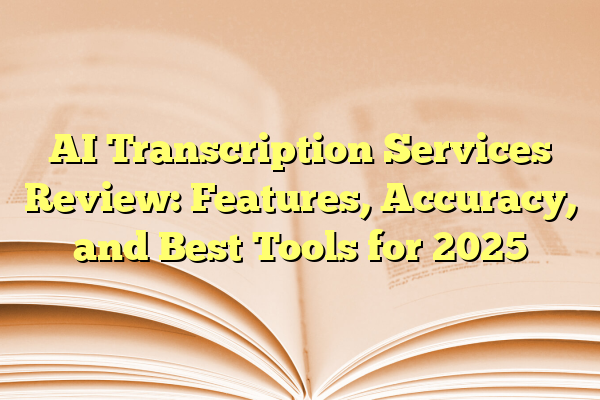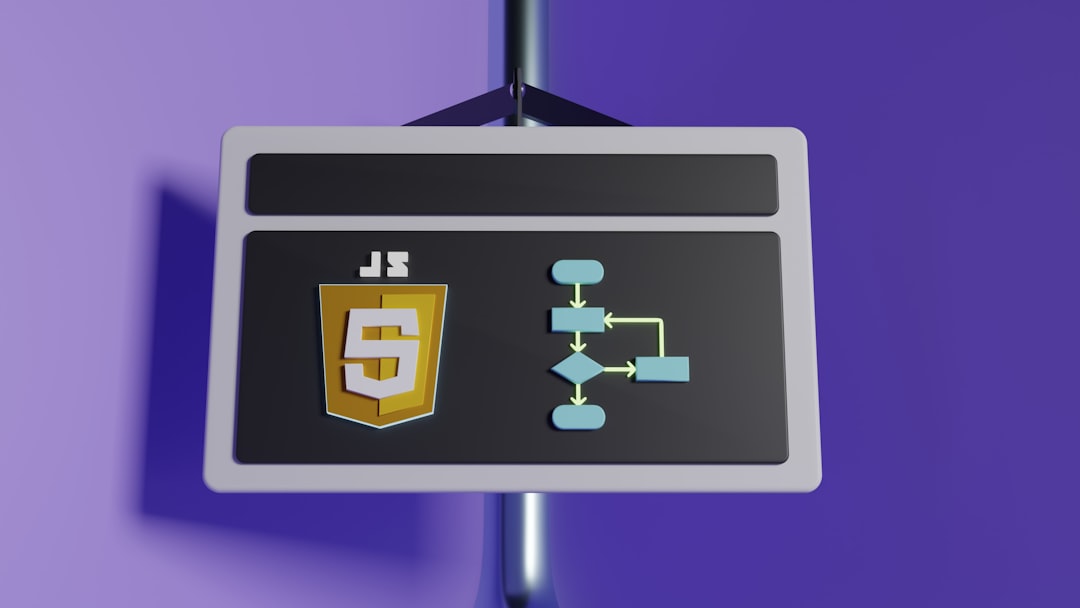
AI Transcription Services Review: Features, Accuracy, and Best Tools for 2025
With the massive proliferation of digital content and remote communication, the demand for robust, accurate, and efficient AI transcription services has never been higher. From journalists needing accurate notes to businesses requiring transcriptions of meetings, today’s market is full of solutions that promise faster turnaround times and near-human accuracy. But which platforms truly stand out in 2025? This in-depth review explores the features, accuracy, and best tools currently leading the AI transcription space.
Contents
- 1 Why AI Transcription Services Matter in 2025
- 2 Key Features to Evaluate in AI Transcription Tools
- 3 The Top AI Transcription Tools in 2025
- 4 Transcription Accuracy: Human vs AI
- 5 Security and Data Compliance
- 6 Cost Comparison
- 7 Future Trends in AI Transcription
- 8 Conclusion: What’s the Best Transcription Tool for You?
Why AI Transcription Services Matter in 2025
AI-powered transcription tools have evolved beyond simply converting speech to text. In 2025, these platforms now offer integrated services such as multilingual support, punctuation handling, speaker identification, real-time collaboration, and API integrations. As remote work, virtual conferences, and content creation continue to dominate, the importance of reliable transcription cannot be overstated.
Accuracy, speed, and scalability are the key metrics by which modern transcription services are judged. Whether you’re an academic researcher, content creator, or corporate team, choosing the right solution can save hours of manual work and ensure compliance, accessibility, and productivity.

Key Features to Evaluate in AI Transcription Tools
While AI transcription services often appear similar on the surface, the difference lies in the depth of functionality and refinement of their models. Here are the primary features professionals should assess when choosing an AI transcription solution:
- Accuracy & Punctuation: Look for tools that automatically add punctuation and are capable of understanding different accents and dialects.
- Speaker Identification: Multi-speaker environments like interviews or panel discussions benefit from tools that tag transcripts with speaker labels.
- Real-Time Transcription: Ideal for live events, lectures, or meetings, real-time transcription enables instant text rendering.
- Integration Capabilities: From Zoom to Slack to Google Drive, seamless integrations are critical for workflow automation.
- Multilingual Support: In a globalized world, the ability to transcribe multiple languages is no longer optional.
- Export Formats: Users should be able to export transcriptions in file types including TXT, DOCX, PDF, SRT, and VTT.
The Top AI Transcription Tools in 2025
1. Otter.ai
Otter.ai remains an industry leader in 2025, refining its transcription accuracy through improved AI models and offering unrivaled real-time collaboration features. It is heavily favored in the education and corporate sectors.
- Accuracy: Around 90–95% under ideal audio conditions.
- Unique Features: Live transcription, speaker separation, shared folders, keyword highlights.
- Best For: Teams, educators, and meeting documentation.
2. Rev AI
Rev AI, the automated counterpart of human-powered transcription giant Rev, delivers fast and reliable results for clients who want scale without sacrificing quality. Known for its transparency and security protocols, Rev AI is popular in the legal and healthcare sectors.
- Accuracy: Approximately 85–90%, depending on audio clarity.
- Standout Feature: Speaker diarization and precise time stamps.
- Best For: Enterprise solutions, legal transcripts, and API integrations.
3. Descript
Descript revolutionizes the transcription game by combining AI transcription with video/audio editing. It treats the transcript as an editable document—perfect for content creators who want to edit without diving into waveform timelines.
- Accuracy: Roughly 90% with minor editing required.
- Best Features: Overdub voice synthesis, multitrack editing, filler word removal.
- Best For: Podcasters, YouTubers, and marketers.
4. Trint
Trint offers more than transcription. With advanced editing, translation, and collaboration tools built-in, it’s tailored to professionals with high content volumes. Trint is notably favored by multimedia newsrooms and documentary makers.
- Accuracy: Between 85–92% based on testing scenarios.
- Strengths: Real-time editing, multilingual support, enterprise-level security.
- Best For: Journalistic teams, media production, and content localization.

Transcription Accuracy: Human vs AI
Although AI transcription has come a long way, it still doesn’t quite match up to human-level precision in complex scenarios like overlapping speech, thick accents, or background noise. That said, modern AI services now achieve 85–95% accuracy in professionally recorded environments, which meets the threshold for most real-world use cases.
Some platforms, like Rev and Scribie, even offer hybrid services where automated transcriptions can be upgraded with human review for an added fee. This represents a pragmatic approach for organizations needing the best of both worlds.
Security and Data Compliance
With rising global concerns about data privacy, especially within sectors like healthcare, legal, and finance, it’s vital to consider what steps transcription services are taking to protect your data. Many top-tier platforms, including Rev AI and Trint, adhere to compliance standards such as GDPR, HIPAA, and SOC 2.
Before uploading sensitive files, verify:
- Where data is stored and processed
- Whether content is used to train AI models
- Who has access to the files and transcripts
Cost Comparison
In 2025, most transcription services have shifted to a SaaS (Software as a Service) pricing model. Here’s a simple breakdown of average pricing:
- Otter.ai: Free tier available; premium starts at $10/month/user
- Rev AI: Starts at $0.25/min for machine transcription
- Descript: Free limited plan; full features from $12/month
- Trint: No free tier; begins at $48/month for professionals
Organizations needing bulk or ongoing transcription should look into API pricing or enterprise custom plans to lower per-minute costs.
Future Trends in AI Transcription
Looking forward, transcription tools will become more context-aware, meaning they’ll not just transcribe words but understand emotion, intention, sentiment, and industry-specific terminology. The integration of Natural Language Processing (NLP) with transcription will lead to smarter content summaries, automatic tagging, and even meeting action-item generation.
Additionally, expect to see tighter integrations with video conferencing tools, real-time multilingual translation, and customizable voice model training for enterprises.
Conclusion: What’s the Best Transcription Tool for You?
Choosing the best AI transcription service in 2025 depends on your specific use case:
- For team collaboration and live meetings: Otter.ai is unrivaled.
- For podcasting and video editing: Descript stands out.
- For scalability and enterprise use: Rev AI and Trint are solid choices.
While automated transcription may not entirely replace human quality in every scenario, it’s clear that AI transcription tools are rapidly transforming the way we capture, process, and share spoken information. The key is finding a platform that aligns with your specific goals—whether that’s speed, accuracy, cost-efficiency, or all of the above.
As AI continues to evolve, one thing is certain: transcription in 2025 is smarter, faster, and more accessible than ever.
